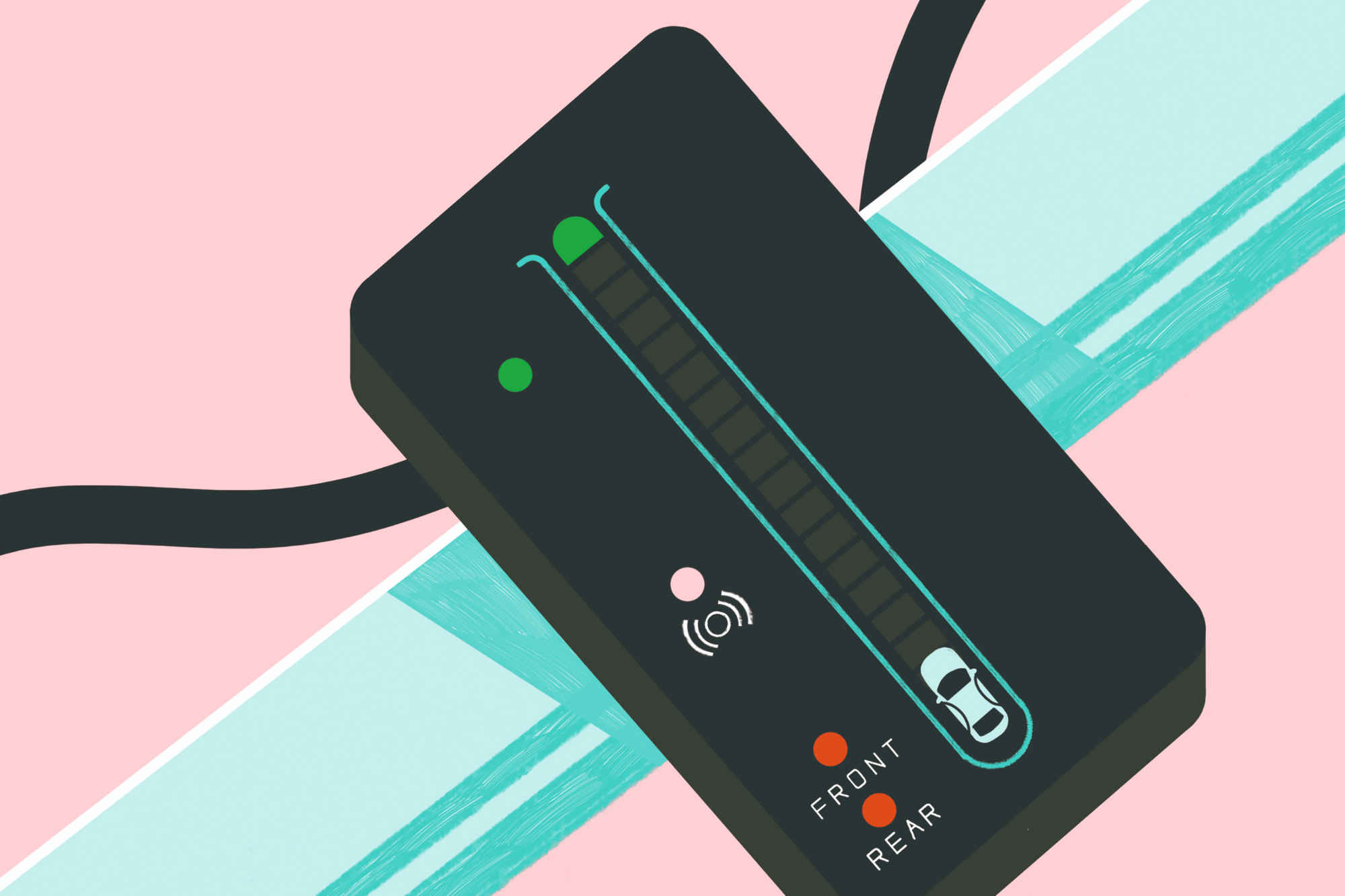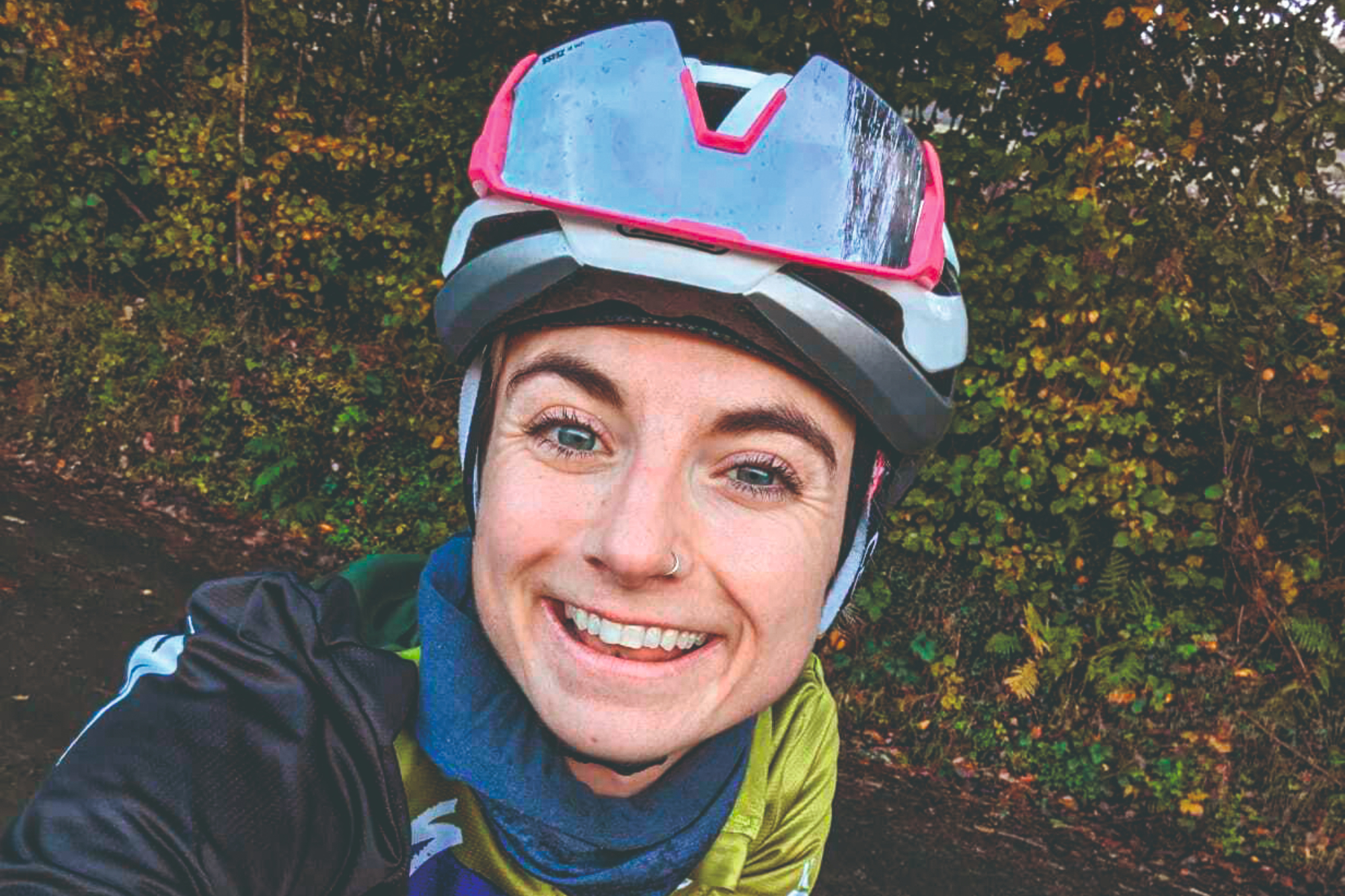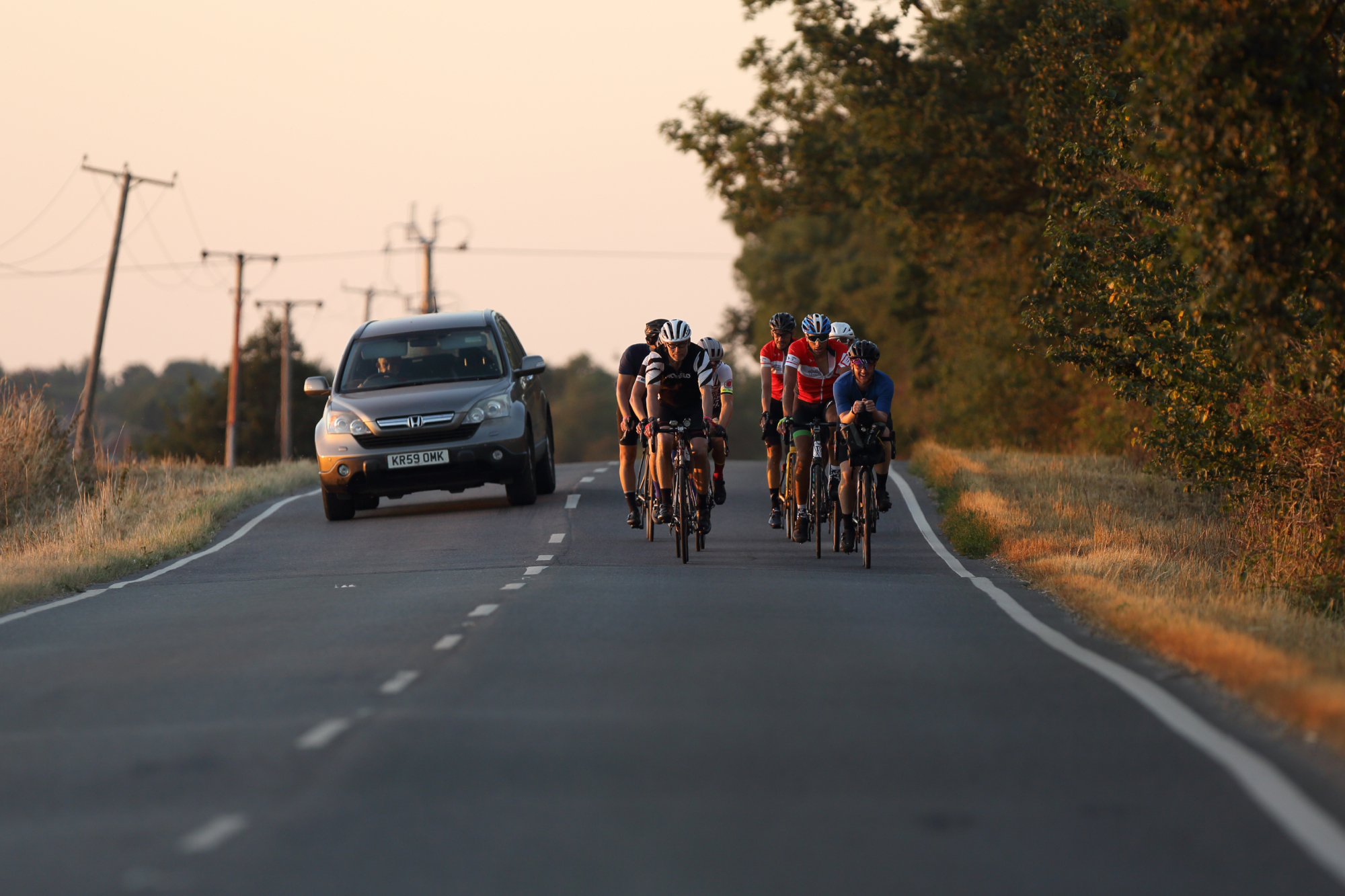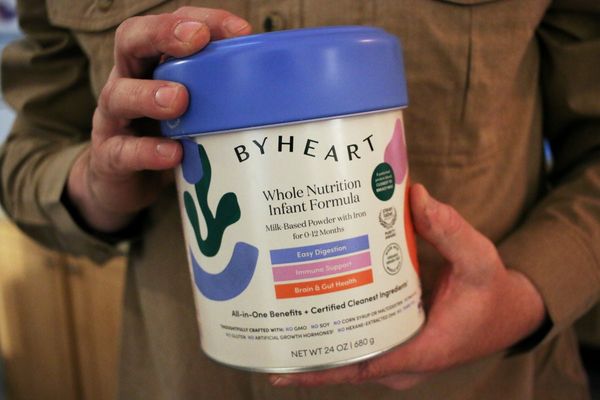
Dave Mellor knew he had a problem with his hearing after finding himself avoiding conversations for fear of humiliating himself. “Going out in a group, riding side by side, is all about having a bit of craic with your mates,” he tells me over the phone. “But over time, I had stopped engaging. I’d be out on social group rides and forever saying, ‘Say that again’.” Struggling to hear clearly enough to chat while cycling is a common problem, but it’s one many riders are reluctant to admit.
“I’d also find myself saying, ‘Yeah, yeah’,” continues Mellor, “pretending to have heard and hoping that ‘yeah’ was a suitable answer. It got a bit embarrassing and I was missing out on all the banter.”

The final straw came when Mellor – owner of Dave Mellor Cycles in Shrewsbury and a former Great Britain team manager – was returning from a cycle show with a female colleague in 2017. “Driving along in the van, she said, ‘not many emails today’. I asked if she had checked her emails on her phone, and she looked at me strangely. She had actually said, ‘not many females today’. She then told me that they’d been having conversations in the shop about some of my strange responses.”
Mellor duly went to his GP and it was confirmed his hearing was below-par, placing him among the estimated 12 million Britons who have hearing loss, deafness or tinnitus – one in six of the adult population. It is one of the most common disabilities across the globe and is, of course, most prevalent among older people; in the UK more than 40% of over-50s have hearing loss, rising to 70% of over-70s.
Meanwhile, only 0.78% of the UK population have a hearing test each year. It’s the one thing we tend to put off getting checked – for seven years, on average. Why is it that we turn a deaf ear to a problem that is so common and which can affect every aspect of life, including our cycling?
What causes hearing loss?
Firstly, what is the threshold for hearing loss? The World Health Organisation (WHO) defines hearing loss as an inability to detect sounds below the normal hearing thresholds of 20 decibels or better in both ears. In layman’s terms, 20dB is equivalent to someone whispering from two metres away. A normal conversation is between 60 and 70dB. Hearing loss exists on a continuum, from mild to profound. Severe hearing loss is defined as being unable to hear sounds below 70 to 95dB, such as audio at the cinema. Nearly a million people in the UK are profoundly deaf.
There are many different causes of hearing loss: from a build-up of earwax, to inherited genes, to injury from head trauma. Among younger people, the biggest single cause is damage from exposure to very loud noise, either over a long period (e.g. working with noisy machinery) or a one-time impulse of sound, such as an explosion. Listening to music above safe volume levels is asking for trouble.
Age-related hearing loss, also called presbycusis, is the most common type, so it’s this that we’re going to focus on. It comes on gradually – as Mellor experienced – and is irreversible. “It was such a slow decline that I didn’t notice it,” the 63-year-old says. “It’s like when you see someone regularly and you don’t notice their hair growing. Not until I went for a hearing test did I realise I’d lost the ability to hear certain sounds.” Mellor was told he had a moderate level of hearing loss. “It was a shock, to be completely honest,” he adds.
It was in his early-50s that Dan Shryock, a freelance travel writer from Oregon, USA, was first made aware of a decline in his hearing. “My wife Carla just kept saying to me, ‘Dan, you can’t hear’,” he tells me via video call. “So I had a hearing check-up in 2013, and my high-end hearing was classified as right at the bottom of the normal range.” He was relieved to still be just above the threshold. But as the years went by, Shryock’s hearing worsened. “My wife noticed me becoming disengaged from conversations when we were out. I admitted it was because I couldn’t hear well enough. It takes a lot to embarrass me but I had to gradually accept that I was no longer fully present in social situations.” In 2021, Shryock returned to the doctors for a second hearing test. “This time, I was definitely over that line.”
Shryock, now 69, also has tinnitus, which is a ringing or buzzing noise in one or both ears. Like hearing loss, it’s very common – around 15% of the global population are sufferers. “I put that down to too many Grateful Dead concerts,” he laughs, but it’s no joke – research has consistently shown that regular exposure to sounds over 85dB can lead to tinnitus and hearing loss. Which poses a question: what about the noises we’re exposed to while cycling?
Can the noises we’re exposed to while cycling cause hearing loss?

In 2016, US ear surgeon Dr Michael Seidman ran a lab-based experiment that found cycling exposes people to airflow-related sound levels and pressures that can lead to hearing damage. “At 10mph, you get 85dB of noise, [and] at 15mph, you’ve got almost 90dB,” he told CyclingTips. “OSHA, the Occupational Safety and Health Administration, says you can be exposed to 85dB of loudness for an eight-hour time period at work but anything over 85dB causes noise-induced hearing loss. Even at 10mph you’re actually causing some noise trauma to your ears.”
This stopped me in my tracks. All of us reach speeds much higher than 15mph on every ride, and two or three times faster downhill. It had never occurred to me that those beloved mountain descents could be harming my hearing. I found a wind tunnel study that documented the wind noise at 60mph to be a literally deafening 120dB. So how can we protect ourselves at higher speeds? Ear plugs are simply too unsafe to wear while riding, but wearing a thick headband such as a Buff over the ears does provide some sound-damping, at least on descents where airflow noise is loudest, without blocking ambient sounds entirely.
How can cyclists cope with hearing loss?
Hearing aids are the answer for many – though according to research, of the 6.7 million Britons who could benefit from them, only around two million people use them. “The NHS gave me my first pair,” says Mellor. “I walked out of the hospital and I could hear birdsong. It was incredible. All these sounds I’d been missing.” It made a big difference to his cycling too. “On my next club run I could hear people around and behind me. It was a game-changer.” Mellor has since upgraded to privately purchased Phonak hearing aids, and while out riding he uses a Garmin Varia radar and rear light which alerts him to overtaking vehicles via sounds and vibration on his Garmin headset. “Before, I’d be riding in the middle of the road unaware that there was a car behind me. It was unsafe,” admits Mellor. “Now I have a visual, sound and vibration warning – it’s amazing.”

Shryock, though, is different. He informs me that where he is based, on the west coast of the US, “hearing aids were prohibitively expensive, and I was informed by experts that, though they might help my tinnitus, the benefit to my hearing loss was marginal so there was no way I was going to pay for it.” Although recent changes in US legislation have brought the cost of hearing aids down to an affordable level, Shyrock still hasn’t invested. Instead, he has adapted his dayto-day life to his hearing levels. “My wife knows that it’s pointless speaking to me unless she’s in the same room and looking at me as she speaks.”
On the bike, though he insists his hearing loss does not hamper his ability to cycle safely, Shryock was getting frustrated at not being able to hear his riding buddy Bob. His solution was to buy a set of Shokz OpenMove bone-conduction open-ear headphones. The device sits against the face and transmits sound vibrations along the cheekbones without blocking the ear. Now, he and Bob call each other during the ride and chat away via their headphones as they turn the pedals. “We started doing this during the pandemic,” says Shryock, “when we didn’t want to ride too close together. We didn’t know we were onto a great idea, but we were. If Bob is up ahead, he can tell me when a car is pulling out of a driveway, and I can tell him when a car has passed me and is approaching him – it’s made us both much safer, as well as allowing us to properly chat.”
The pro with hearing loss: ‘I’m a deaf cyclist - and we need more role models’

Hearing difficulties aren’t confined to the older population: Lucy Harris, a 30-year-old rider for Loughborough Lightning, was born with severe sensorineural hearing loss, a condition affecting the nerves inside the ears.
Diagnosed at the age of four, when her parents took her for speech therapy, Harris has worn hearing aids since she was six. While growing up in Oxford, she had regular follow-up tests and, though her hearing stabilised at the age of 13, it will deteriorate as she gets older. Harris can hear low-frequency noises such as the human voice, but not higher-pitch noises or fainter sounds such as wind, rain and rustling paper.
“Most of the time, it doesn’t affect me,” she says, “but I can’t watch TV without subtitles and I find busy social gatherings overwhelming. I do think I would be less introverted if I wasn’t deaf.” While qualifying as a meteorological data scientist, Harris took up cycling aged 19, but it wasn’t until her mid-20s that she “accidentally started getting a load of QoMs on Strava. I was trying to be a runner but I was crap,” she laughs. “I joined the Cowley Road Condors, but I swore blind I’d never race my bike, I just wanted to ride for fun. But then, in 2021, some women in the club told me to do some TTs and criteriums and I found that racing was absolutely brilliant.”
Within a season, Harris had gained her elite licence, and in 2023 raced for the UCI Continental team Awol O’Shea, competing in France as well as domestically. “I want to be fast, win things, and I’m just going to keep pushing until I stop doing it.”
But Harris’s cycling journey hasn’t been easy. She tells me that her decision to leave Awol O’Shea this year was in part related to difficulties surrounding her deafness. Races can be stressful for Harris. “I very rarely get anything useful from the team radio,” she says. “I also wonder whether other people hear the squeaks of the brakes on a descent or brakes being applied before a crash, because I don’t. I feel like it’s harder for me to avoid crashes.”
There have been embarrassing moments, but comical ones too. “One off-season I thought I was going really slow, and thought I was really unfit. Then my friend came out with me and said, ‘Lucy, you do realise your front brake is rubbing against the rim?’ I couldn’t hear it, but when my friend unstuck it, I was able to go 30 watts faster. Another time my bottom bracket was loose, but I couldn’t hear it.” While Harris is able to laugh, she is vexed by society’s lack of awareness of the matter and the lack of representation. “Because you can’t see deafness, it’s not widely spoken about. Not everyone in the deaf community would identify as disabled, but we do have a disability. Why is there nothing in the Paralympics for deaf people? There are so few deaf role models.”
Widespread issue

As I research this topic, it becomes increasingly clear just how many of us – and especially older people – have or will experience hearing loss. One statistic really stands out: by 2050, it’s estimated that 2.5 billion people worldwide will have impaired hearing. There really shouldn’t be an iota of shame or reservation when talking about this issue – if you have hearing loss, you are far from alone. What’s more, hiding away from hearing loss can have serious consequences. We’ve heard about unsafe riding, social awkwardness and anxiety, which can lead to loneliness, social isolation and a feeling of worthlessness. There are things we can all do to help people with hearing loss: speak in a loud, cloud voice; face them and don’t cover your mouth while speaking; minimise background noise; and be kind about it – it is likely you’ll one day be affected too.
Spotting the signs of hearing loss and acting early helps to allay the problems described above. Modern technology takes the sting out of adjusting to the new realities of impaired hearing, meaning that it need not hold us back in our lives. Mellor can attest to that. “Before I got my hearing aids, my partner Helen was very nervous and would have terrible anxiety while out riding with me. She would tell me that I didn’t have a clue what was going on around me, and that I was a danger on the road. Now I have my hearing aids and the Garmin Varia, it’s completely transformed our riding experience. Even better, I can hear the birds singing in the hedgerows as we pass them.”
How to get help
There are various support networks, organisations and charities supporting people with deafness, hearing loss and tinnitus.
The Royal National Institute for Deaf People has a wealth of information, as does the British Deaf Association. Hearing Link provides self-help videos for those affected by hearing loss. For the deaf community, the ELREM Foundation provides support, including ‘Deaf Club’ cycling sessions in London with instructors communicating in sign language.
The first version of this article was published in the print edition of Cycling Weekly. Subscribe online and get the magazine delivered direct to your door every week.







